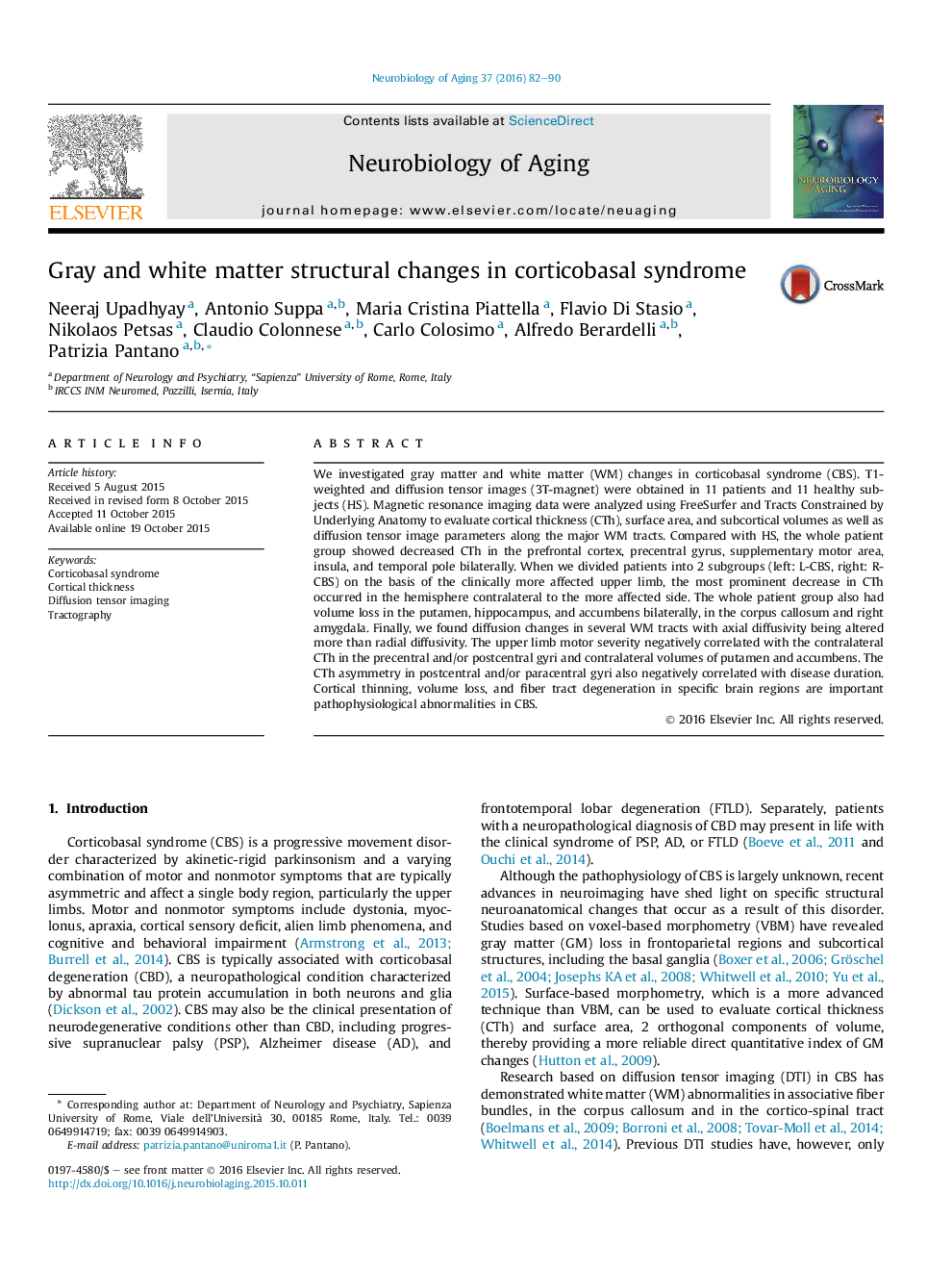| Article ID | Journal | Published Year | Pages | File Type |
|---|---|---|---|---|
| 6803698 | Neurobiology of Aging | 2016 | 9 Pages |
Abstract
We investigated gray matter and white matter (WM) changes in corticobasal syndrome (CBS). T1-weighted and diffusion tensor images (3T-magnet) were obtained in 11 patients and 11 healthy subjects (HS). Magnetic resonance imaging data were analyzed using FreeSurfer and Tracts Constrained by Underlying Anatomy to evaluate cortical thickness (CTh), surface area, and subcortical volumes as well as diffusion tensor image parameters along the major WM tracts. Compared with HS, the whole patient group showed decreased CTh in the prefrontal cortex, precentral gyrus, supplementary motor area, insula, and temporal pole bilaterally. When we divided patients into 2 subgroups (left: L-CBS, right: R-CBS) on the basis of the clinically more affected upper limb, the most prominent decrease in CTh occurred in the hemisphere contralateral to the more affected side. The whole patient group also had volume loss in the putamen, hippocampus, and accumbens bilaterally, in the corpus callosum and right amygdala. Finally, we found diffusion changes in several WM tracts with axial diffusivity being altered more than radial diffusivity. The upper limb motor severity negatively correlated with the contralateral CTh in the precentral and/or postcentral gyri and contralateral volumes of putamen and accumbens. The CTh asymmetry in postcentral and/or paracentral gyri also negatively correlated with disease duration. Cortical thinning, volume loss, and fiber tract degeneration in specific brain regions are important pathophysiological abnormalities in CBS.
Related Topics
Life Sciences
Biochemistry, Genetics and Molecular Biology
Ageing
Authors
Neeraj Upadhyay, Antonio Suppa, Maria Cristina Piattella, Flavio Di Stasio, Nikolaos Petsas, Claudio Colonnese, Carlo Colosimo, Alfredo Berardelli, Patrizia Pantano,
